Sex, torture and Nazis: the scandalous St. Stephen artist whose work reached millions
Semi-nude women, sadistic soldiers, and animal attacks aren't exactly high art.
Yet those were themes that appealed to the millions of men who read "sweat magazines" — adventure digests sold across North America from the 1940s to the 1970s.
Publications like Man's Story, World of Men, and Man's Epic weren't exactly pornographic — but were the opposite of politically correct.
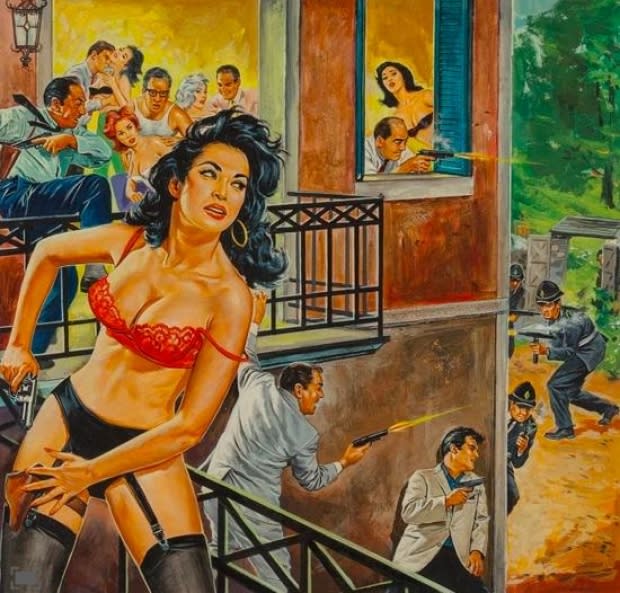
Cover illustrations featured soft-core kink and violence, rendered in lurid colour.
Few people would have guessed that shy, unassuming Norm Eastman — born in St. Stephen and trained at Mount Allison University — was one of the top illustrators fuelling the fantasies of a generation of young men.
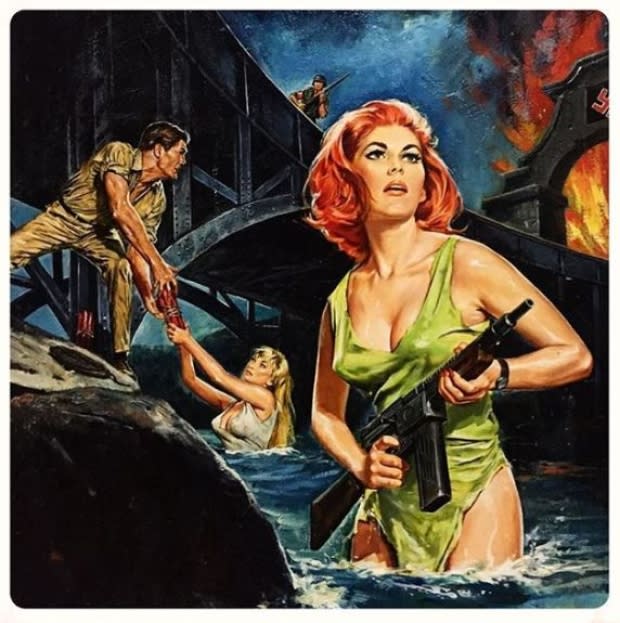
"We used to hide those illustrations under the bed or in the closet," said Jane Eastman, Norm's wife of 27 years.
"He thought it was funny. Norm probably was the most moral person I've ever known, he really was. It was a matter of being able to afford a loaf of bread and peanut butter to eat."
Times sure do change. In 2019, original Norman Eastman illustrations can sell to collectors for as much as $15,000.
But how Eastman's bodice-ripping illustrations made it from small-town New Brunswick into the hands of millions of readers is a story that remains, for the most part, untold.
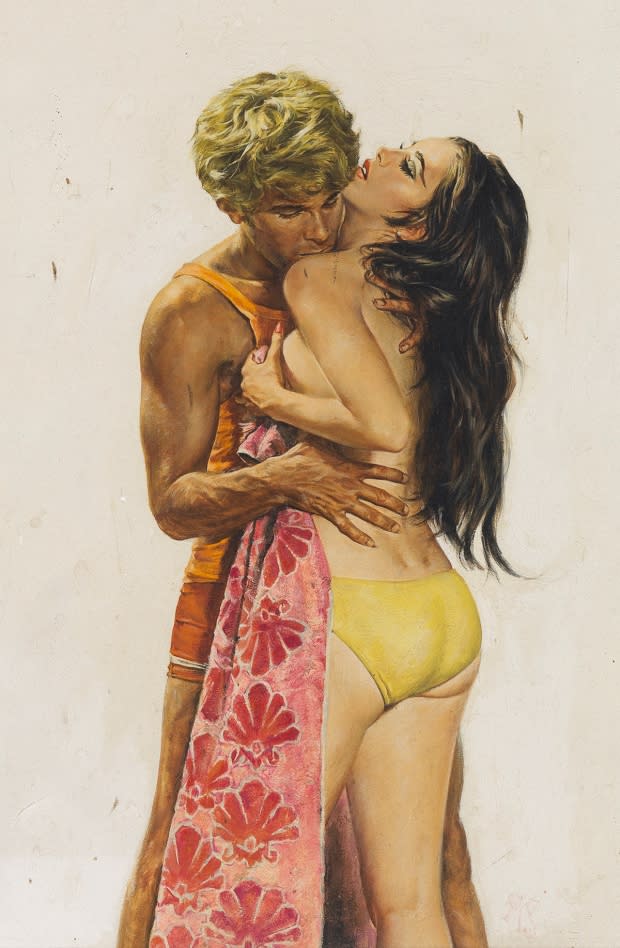
Hotdog seller's son
Eastman was born in St. Stephen in 1934 to Margaret and W.T Eastman, who operated a hotdog stand on King Street.
His mother encouraged his artistic ambitions, according to Jane.
"He started drawing and entered contests, and he got all kinds of little prizes," she said.

At age 11, he designed a Victory Loan sign depicting Hitler, Mussolini and Tojo as a three-headed monster, which hung in downtown St. Stephen during the Second World War.
As a teen he attended the fine arts program at Mount Allison University and earned a full scholarship to Slade School of Fine Art in London.

In 1954, when Eastman was 24, he brought his portfolio to the iconic U.S. artist Norman Rockwell, who said Eastman's art was "of very high quality" and encouraged him to move to the United States.
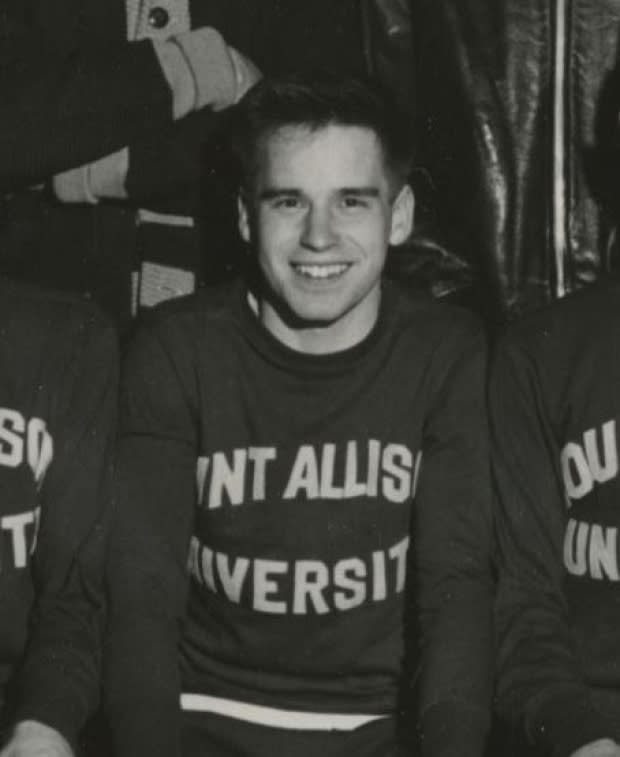
'They wanted beautiful girls'
Eastman took Rockwell's advice — and in 1959 moved to New York City, where he rented a studio in an badly heated, roach-infested warehouse. Breaking into the publishing scene was slow going.
"He was very poor in New York," his wife said. "It was really, really poor living."
He got his first big break drawing for men's magazines — but the subject matter was fairly predictable.
"They wanted beautiful girls, big bosoms and torture," Jane said. "But never show the girl grimacing. She's always got to be pretty."
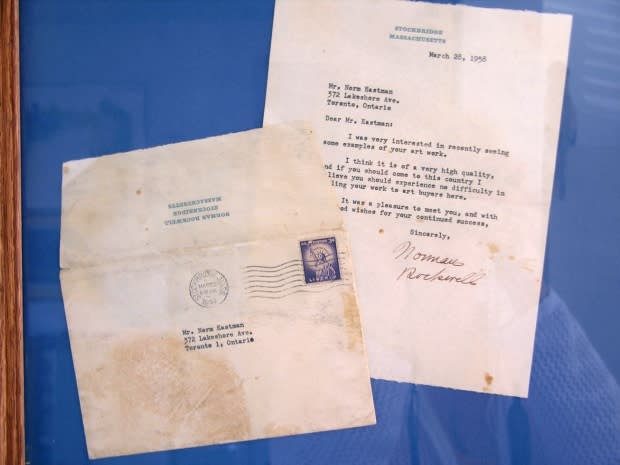
The magazines were geared toward "veterans and active servicemen," said collector Bob Deis, founder of the collector's site MensPulpMags.com and author of the Men's Adventure Library book series.
The formula usually included "Nazis doing terrible things to distressed damsels," Deis said..
"They didn't glorify Nazis. On many of the covers, you'll see an American serviceman coming to save woman … Sometimes, the women are heroines in the stories and take revenge on the Nazis as gun-toting freedom fighters."
The resolution of the stories followed a predictable pattern.
"Usually, the hero was rewarded by the damsels after they were rescued," Deis said.
'No idea how good he was'
Eastman was a one-man show.
The pay was just $100 per drawing, with which Eastman would hire live models, acquire costumes and photograph the actors in the scenes each cover required. Sketching and painting a single illustration would take two or three weeks.
In an as-yet-unpublished interview with Deis, pin-up model and actress Eva Lynd recalled Eastman as "respectful" and "my favourite artist to work with."
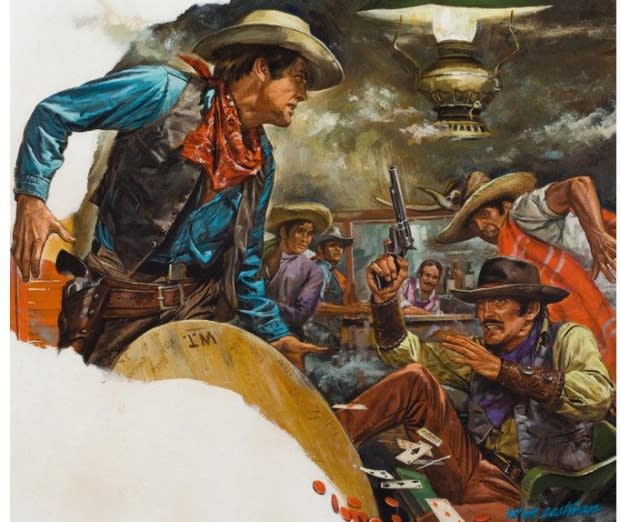
"I had the feeling that he had no idea how good he was. I still think he was the best of all the men's adventure magazine illustrators that I have seen."
Sometimes, Eastman would paint himself into the covers, "getting a friend of his to take a photo of him posing as the bad guy. It was awful, just terrible, terrible!" Lynd said, laughing.
"He took the photos, he read the manuscripts, he did everything," Jane said.
Hefty price tag
Eastman died of Alzheimer's disease on November 2007 in the Santa Ynez Valley Hospital in Lompoc, Calif.
Jane said he drew and painted until the end, but "we never saw any of the money. We weren't smart, that's why."

"It's wild," Deis said. "Men's adventure magazines were read by millions of men in the U.S. and Canada … then they faded away in the late seventies. They fell out of favour in general and were criticized for things like the Nazi covers that Norm Eastman often did."
But in the age of online auction houses and niche collectors, Eastman's work has had a resurgence in popularity.
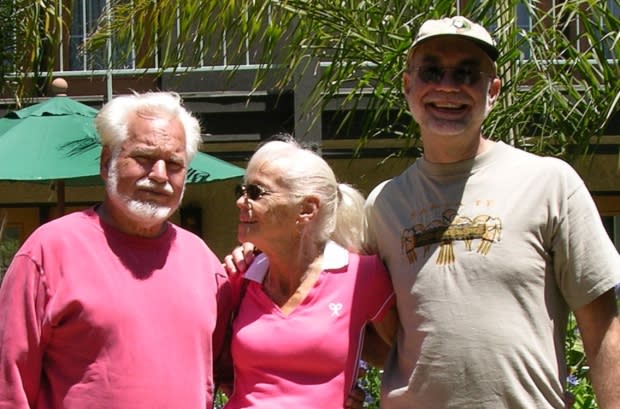
"It's unusual, outrageous, different — there's a lot of same old, same old out there," said collector Rich Oberg, who owns thousands of men's pulp magazines and has purchased several original Eastman works.
"There is a lot of great artwork, a lot of great stories, and a lot of interesting insightsinto what American culture was like back in the 1950s and 1960s in those magazines," Dies said.
Eastman's work is one of the best examples of a genre that was hugely popular but has remained largely overlooked.
"He was extremely good," Jane said. "The best ever."

